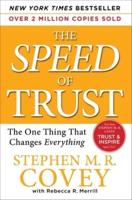Publisher's Synopsis
Managers need to see a moving picture of organizational performance. They need to measure their quality, speed and customer service and to ensure that profitable products are sold to profitable customers. They also need to identify and encourage value creation in all their processes. These are the "real numbers", the critical gauges which drive the organizational machine.;But traditional accounting systems can't see these numbers; it's as though they exist in a different dimension. These numbers do not flow up and down the traditional vertical management hierarchy. Rather, they flow horizontally across functional boundaries, following the chain of the organization's value-adding processes. They emphasize improvement rather than control. At their heart lies the key issue - the measurement of work - and the key question - does it add value to the customer?;Between 20-30 per cent of an organization's total costs are represented by work for which the customer derives little or no benefit. Elimination of this work alone would immediately transform the profitability of most organizations. Measuring work is also the key to understanding the "causes of costs" and, thus, which products, services, customers, channels and markets are really profitable.;This book shows how a horizontal information system can be designed to provide managers with the real numbers. It argues that better management information, more relevant performance measures and more thoughtful reward systems can change management behaviour, support strategy and transform the bottom line.;The book's "transformation agenda" examines the six key imperatives: cut the workload not the workforce; focus managers and workers on the real numbers; align performance measures with strategy; sell profitable products and services; find and retain profitable customers; and implement a horizontal information system.;Traditional measurement systems have become preoccupied with financial reporting and controlling budgets. But by using the real numbers to measure horizontal performance, accountants and their systems should again become the partners of managers rather than their masters. This book puts the management back into management accounting with the result of permanently transforming the bottom line.











